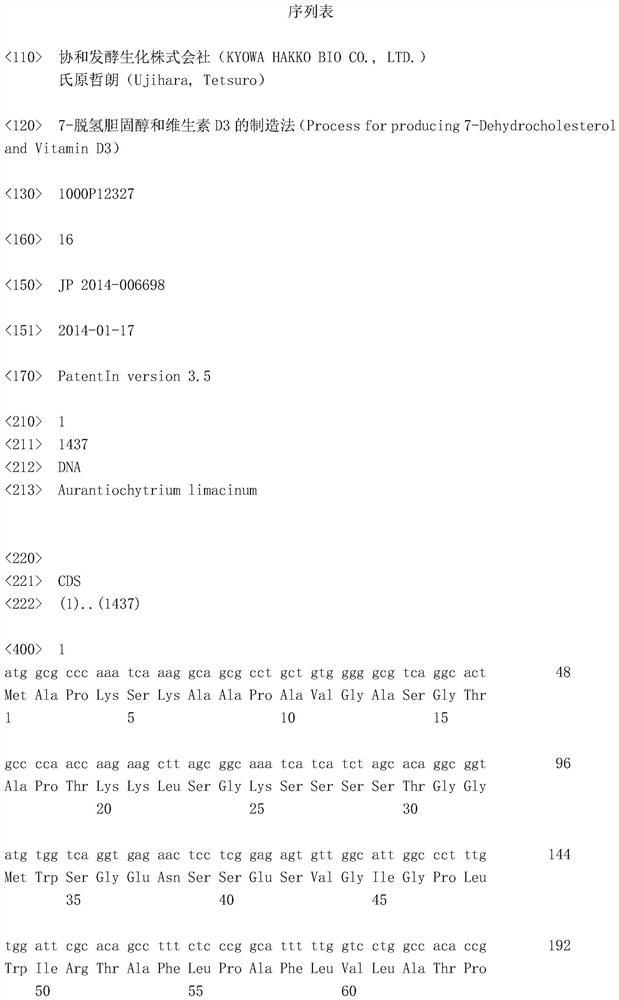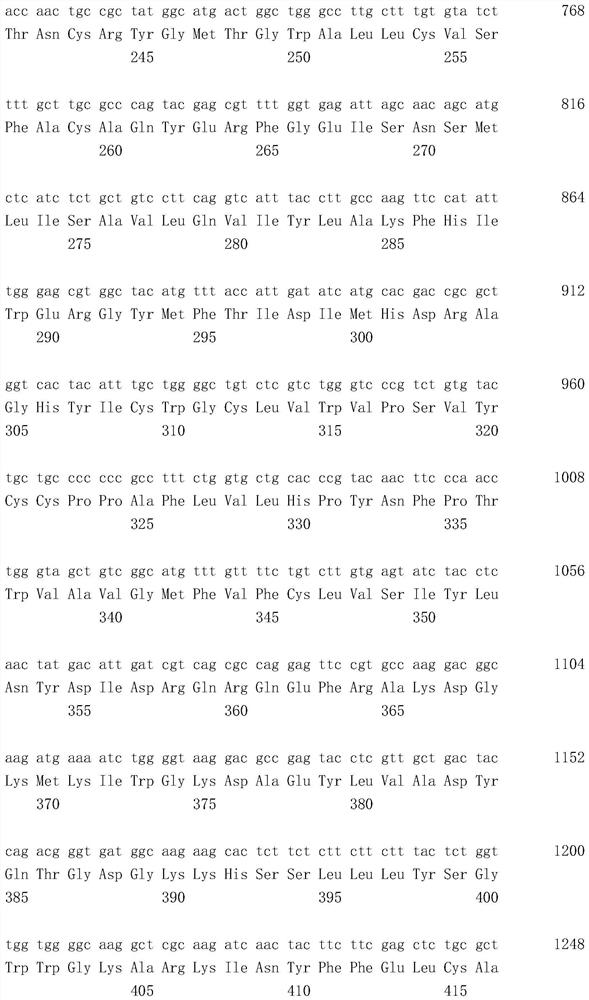Manufacturing method of 7-dehydrocholesterol and vitamin d3
A technology of dehydrocholesterol and manufacturing method, which can be applied in the fields of botanical equipment and methods, biochemical equipment and methods, recombinant DNA technology, etc., and can solve problems such as adverse effects on the growth of host organisms, reduction in reducing activity, etc.
- Summary
- Abstract
- Description
- Claims
- Application Information
AI Technical Summary
Problems solved by technology
Method used
Image
Examples
Embodiment 1
[0134] Preparation of clathomycetes microorganisms that lost 7DHC reducing activity
[0135] In the reference example, it is known that a large amount of cholesterol is accumulated Aurantiochytrium limacumum ATCCMYA-1381 (hereinafter referred to as MYA-1381) was deprived of 7DHC reducing activity by the following method.
[0136] Genomic DNA of MYA-1381 was prepared by a conventional method. Each DNA fragment was amplified by performing PCR using the genomic DNA as a template and DNA having the base sequence shown in "Primer pair" in Table 2 as a primer pair.
[0137] Table 2.
[0138]
[0139] In addition, using the drug resistance gene expression cassette (manufactured by Gene Bridges) as a template and DNA consisting of the nucleotide sequences represented by SEQ ID NOs: 11 and 12 as a primer pair, PCR was performed to detect the hygromycin resistance gene (sequence No. 5) for amplification.
[0140] The three types of DNA fragments amplified above were used as a...
Embodiment 2
[0150] Manufacture of 7DHC
[0151] MYA-1381 (parent strain) and MYA-1381Δ7DHCR were cultured in the same manner as in Reference Example using a liquid medium (12% glucose, 1% yeast extract, 1% peptone, 50% artificial seawater). After the cultivation, the bacterial cells were collected and analyzed by gas chromatography in the same manner as in the reference example. The results are shown in Table 4 and Table 5.
[0152] In MYA-1381Δ7DHCR, cholesterol produced in the parent strain was not produced, and 7DHC was produced instead.
[0153] Table 4.
[0154] Cyticomycetes Growth (OD660nm) Cholesterol (mg / L) MYA-1381 54±9.3 435±41
[0155] table 5.
[0156] Cyticomycetes Growth (OD660nm) 7DHC (mg / L) MYA-1381Δ7DHCR 66±6.8 325±37
[0157]This result is substantially higher than that reported so far for budding yeast. This is considered to be due to the utilization of the clathromycin-like microorganisms that originally produce ...
Embodiment 3
[0160] Manufacture of Vitamin D3
[0161] The 7DHC produced in Example 2 was irradiated with UV at 300 nm and treated at 100° C. for 30 minutes. After this treatment, analysis was performed by gas chromatography in the same manner as in the reference example.
[0162] As a result, it was confirmed that 7DHC was converted into vitamin D3.
PUM
 Login to View More
Login to View More Abstract
Description
Claims
Application Information
 Login to View More
Login to View More - R&D
- Intellectual Property
- Life Sciences
- Materials
- Tech Scout
- Unparalleled Data Quality
- Higher Quality Content
- 60% Fewer Hallucinations
Browse by: Latest US Patents, China's latest patents, Technical Efficacy Thesaurus, Application Domain, Technology Topic, Popular Technical Reports.
© 2025 PatSnap. All rights reserved.Legal|Privacy policy|Modern Slavery Act Transparency Statement|Sitemap|About US| Contact US: help@patsnap.com



